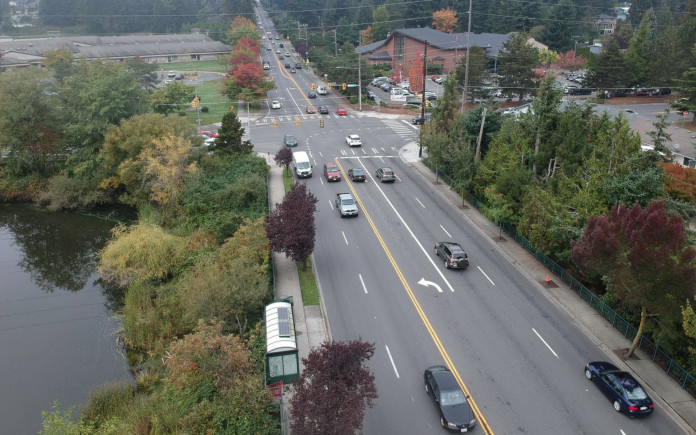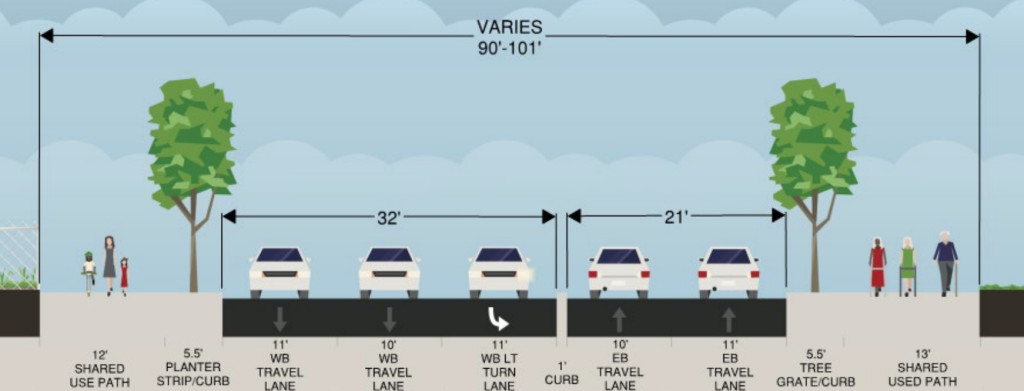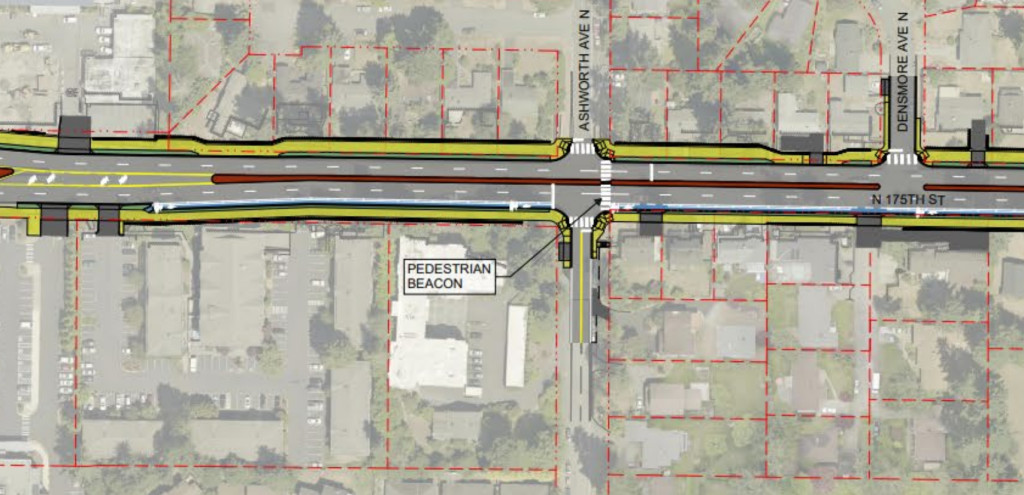Shoreline City Council has decided to move forward with the extensive redesign of N 175th Street, despite significant public concern over the removal of 274 trees. This ambitious project aims to modernize the street, enhancing pedestrian and cyclist safety and improving vehicle flow near the I-5 interchange. While city leaders acknowledge the community’s environmental concerns, they emphasize the importance of these multimodal improvements for Shoreline’s future.
The planned changes to 175th Street, a key thoroughfare in Shoreline, involve widening the road to accommodate expanded sidewalks and dedicated bike lanes, alongside maintaining vehicle capacity. This project, slated to begin construction next year, has met with resistance from groups like Save Shoreline Trees, who are vocal about the environmental impact of removing a substantial number of trees. A public meeting was held this week to address these concerns, but the City Council appears firm in its commitment to the project’s current design.
Despite the opposition, the Shoreline City Council showed strong unity at Monday’s meeting in favor of proceeding with the initial phase of the 175th Street revamp. This phase focuses on the section between I-5 and Meridian Avenue N and is fully funded, albeit reliant on external funding sources. Any major redesign at this stage could jeopardize the project’s timeline and funding. For subsequent phases, extending from Meridian Avenue N to Stone Ave N and connecting to the Interurban Trail, the council has requested staff to explore design modifications that could preserve more trees.
However, the core elements of the project – enhanced biking and pedestrian infrastructure – are non-negotiable for most council members. The suggestion from tree advocates to remove bike lanes and minimize pedestrian space was largely rejected. The city’s vision for 175th Street prioritizes a balanced approach to urban mobility, accommodating various modes of transport.
 Planned overhaul of 175th Street in Shoreline, WA, showing pedestrian and cyclist paths
Planned overhaul of 175th Street in Shoreline, WA, showing pedestrian and cyclist paths
Save Shoreline Trees, a local volunteer group focused on preserving Shoreline’s tree canopy, argues that the planned sidewalks on 175th Street are excessively wide. They have proposed redirecting cyclists to N 178th Street and narrowing the sidewalks on 175th Street to the minimum ADA requirement of five feet. Furthermore, they suggest eliminating roadway medians, even though these medians are intended to include newly planted trees. Save Shoreline Trees contends that median trees would offer minimal overall shading benefits.
Ruth Williams, president of the Thornton Creek Alliance, echoed these sentiments in a letter to the council, supporting Save Shoreline Trees’ proposals. She argued that relocating bike lanes to N 178th Street would create a more enjoyable cycling experience, free up space for vehicles on N 175th, and crucially, save existing trees.
However, city planners point out that diverting cyclists to parallel routes, as seen in the N 145th Street project, discourages cycling and undermines Shoreline’s goals to reduce car dependency. Creating direct and appealing bike routes is essential for promoting cycling as a viable transportation option.
A key factor driving the 175th Street redesign is improved access to Shoreline’s two upcoming light rail stations, set to open on August 30th. Shoreline has been proactively developing housing near transit hubs, approving over 4,000 new homes since 2019. This housing boom, increasing the city’s housing stock by nearly 20%, necessitates improved infrastructure to support sustainable transportation options.
Councilmember Jon Ramsdell emphasized the importance of facilitating access to public transportation. “We have a light rail system… that has zero net GHG gases, and we have a responsibility… to make access to that form of transportation as easy as possible,” he stated. He highlighted the future connection of 175th Street to the planned Trail Along the Rail along I-5, further enhancing non-car mobility in Shoreline. The 175th Street upgrade is envisioned as a transformative project for pedestrian and cyclist movement in the city.
 Artist's rendering of the redesigned 175th Street in Shoreline, WA, highlighting multi-use paths
Artist's rendering of the redesigned 175th Street in Shoreline, WA, highlighting multi-use paths
Councilmember Betsy Robertson defended the tree removals, stating that the trees along 175th Street, while valuable, did not warrant preservation at the expense of broader community benefits. She argued for a balanced perspective, acknowledging the cumulative loss of smaller trees but emphasizing the greater good of improved infrastructure for current and future generations.
Councilmember Annette Ademasu was the only member who expressed openness to redesigning the project to save more trees, even if it meant reducing bike and pedestrian space. However, city staff cautioned that removing the bike lane component could negatively impact the city’s eligibility for grants crucial for funding future phases of the 175th Street project.
This is not the first instance where multimodal improvements have clashed with tree preservation efforts in Shoreline. Sidewalk upgrades along 15th Avenue NE faced similar opposition due to tree removals. Despite protests, Shoreline proceeded with that project, and the 145th Street redesign has also drawn criticism for tree removal.
Shoreline Mayor Chris Roberts suggested exploring reducing vehicle lanes in future phases of the 175th Street project west of Meridian Avenue N. He argued that reducing lanes could lower traffic speeds and improve pedestrian crossing safety without compromising traffic flow in that particular segment. “Regardless of whether individuals wanted to save trees or to make sure we have a complete street with protected bike lanes, I didn’t hear one person here saying we need four lanes between Meridian and Midvale,” Roberts noted.
 Concept image of future phases of 175th Street project in Shoreline, WA, showing bike lanes and medians
Concept image of future phases of 175th Street project in Shoreline, WA, showing bike lanes and medians
However, Councilmember Keith Scully and Public Works Director Tricia Juhnke expressed reservations about reducing vehicle lanes on 175th Street, citing high traffic volumes exceeding 30,000 trips per day. Juhnke emphasized that a key project objective is to enhance intersection capacity and improve vehicle flow, driven by level of service standards.
Despite the ongoing debate, the city appears committed to moving forward with the 175th Street project in its current multimodal-focused design. While acknowledging environmental concerns, Shoreline leaders prioritize creating a balanced transportation network that accommodates pedestrians, cyclists, and drivers, and facilitates access to public transit. The project represents a significant step towards a more sustainable and accessible future for Shoreline, even amidst environmental trade-offs.
Source: Shoreline Moves Ahead With Highway Expansion On Seattle’s Doorstep

